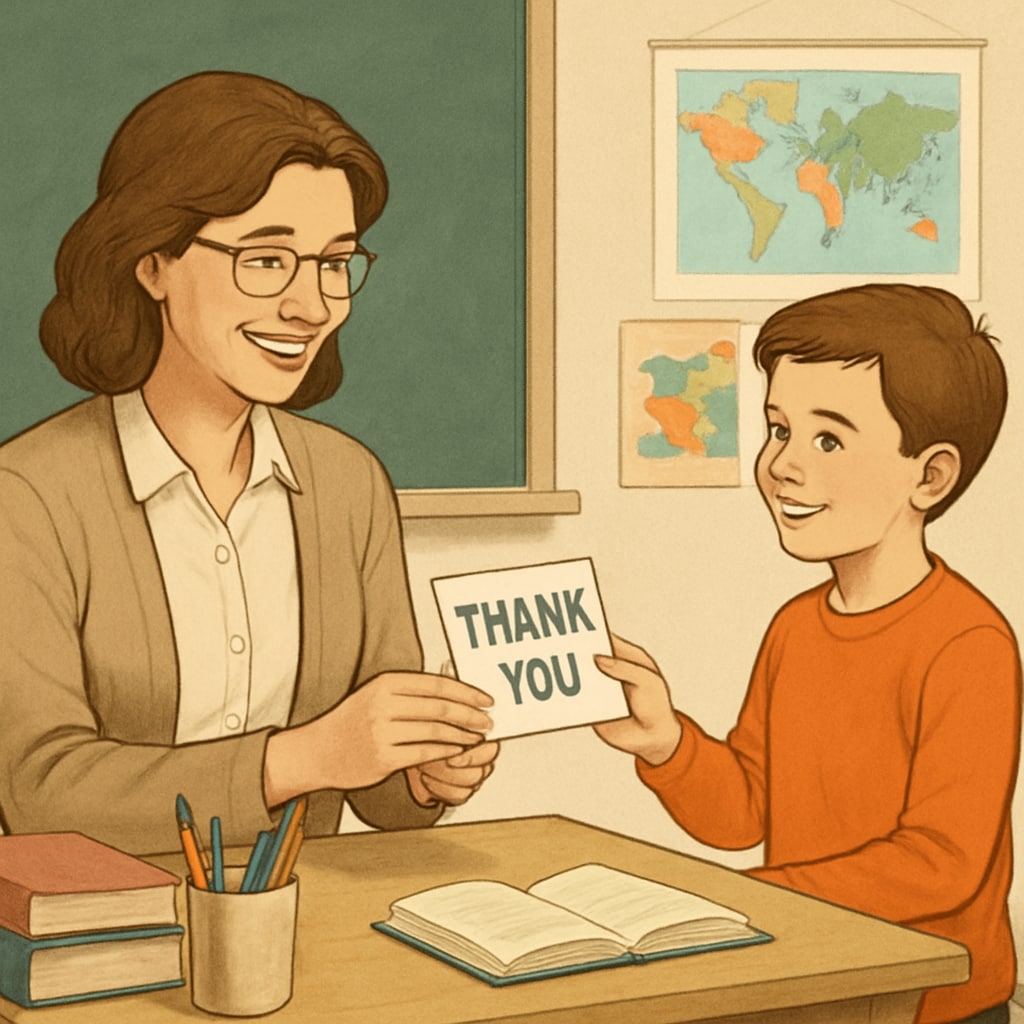In the world of education, a simple yet heartfelt “thank you” from a student can create a ripple effect of profound significance. These moments of student gratitude have the power to reshape teacher-student relationships, ignite passion for learning, and leave a lasting impression on both parties. The interaction between students and educators is far more than a transactional exchange of knowledge—it’s a connection rooted in listening, respect, and mutual understanding.
For educators, who often dedicate themselves tirelessly to their work, hearing those genuine words of appreciation can feel like a validation of their efforts. These moments remind teachers of the importance of their role and reaffirm the impact they have on shaping lives. But why is student gratitude so powerful, and how does it foster deeper teacher-student connections?
How Gratitude Transforms Teacher-Student Relationships
Teacher-student relationships are built on trust, communication, and respect. When students express gratitude, it strengthens these foundations by reinforcing the idea that their voices matter. Teachers who feel appreciated are often more motivated, which positively influences their teaching methods and attitudes. In turn, students benefit from the increased energy and enthusiasm educators bring into the classroom.
Gratitude also opens the door to empathy and understanding. Teachers who receive sincere appreciation tend to reflect on the needs of their students more deeply, fostering a supportive and inclusive environment. This cycle of positivity builds a classroom culture where learning thrives.

The Role of Listening and Respect in Education
Listening is one of the most underrated yet transformative skills in education. When teachers truly listen to their students—whether it’s about their challenges, aspirations, or feedback—they create an environment of mutual respect. This act of listening validates the student’s perspective and encourages them to take ownership of their learning journey.
Respect plays a similar role. Students who feel valued and understood are more likely to express gratitude, creating moments that resonate deeply with educators. These interactions aren’t merely fleeting—they become the seeds of lifelong memories and lessons.
For example, a teacher who takes the time to address a struggling student’s concerns may eventually hear that heartfelt “thank you” when the student begins to succeed. Such moments underscore the importance of empathy and patience, reminding educators why they ventured into teaching in the first place.

Real-Life Stories of Gratitude in Education
Across the globe, educators have shared stories of how student gratitude changed their perspectives. One teacher recounted receiving a letter from a former student years later, thanking them for their unwavering support during a difficult time. Another spoke of a simple thank-you note handed to them after class, which brought tears to their eyes.
These stories highlight the universal truth that gratitude transcends language, culture, and age. In every instance, the act of giving thanks rekindled the teacher’s passion for their work and reminded them of the profound influence they wield.
How Educators Can Encourage Gratitude
While student gratitude often arises organically, educators can nurture an environment that encourages appreciation. Here are a few strategies:
- Model gratitude: Teachers who regularly express appreciation set an example for their students, fostering a culture of kindness.
- Create open communication: Encourage students to share their thoughts and experiences, making it easier for them to express gratitude when they feel it.
- Celebrate milestones: Recognizing student achievements, big or small, often prompts students to express appreciation in return.
As a result of these efforts, both students and educators can experience a more fulfilling and connected classroom atmosphere.
In conclusion, the power of a heartfelt “thank you” should never be underestimated. Student gratitude acts as a catalyst for stronger teacher-student bonds, inspires educators to continue their vital work, and creates a classroom environment built on respect and empathy. By fostering this culture of appreciation, education becomes more than just a pathway to knowledge—it becomes a journey of mutual growth and inspiration.
Readability guidance: Use short paragraphs and lists to summarize key points. Ensure transitions between ideas flow naturally, and maintain a conversational yet professional tone throughout.


